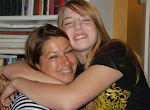One of my England dreams was to sit still in a cathedral and listen to sublime music. That aural feast was delivered in tandem last night in what is known as the University Church of St.Mary the Virgin. An exquisite 13th century building with a rich history - it was the site of the 1555 heresy trails of the Oxford Martyrs including Archbishop Thomas Cranmer who was subsequently burned at stake just outside the city walls to the north.
Each evening following dinner, we are treated to some organized literary or musical celebration.
Of course, the insidious plan is to feed us like kings and queens of academia and then like a glorified form of bootcamp, force us all to trudge back downtown - this time forging straight ahead on High Street.
On High Street we pass through various stone edifices including the famous Bodelian Library, Radcliffe Camera and the Hertford Bridge.
First (pictured below) we pass on our left, the Hertford Bridge.
Hertford Bridge in New College Lane, Oxford, England is often referred to as the "Bridge of Sighs" because of its supposed similarity to the famous bridge of the same name in Venice.
The bridge links together the Old and New Quadrangles of Hertford College.
Then on the right, the entrance to Bodelian Library, the main research library of the University of Oxford and of which the Radcliffe Camera (pictured below) is a later extension.
The circular dome and drum of the Radcliffe Camera is one of the most distinctive landmarks in a city full of distinctive buildings. The camera (the word means simply "room") was built 1737-1749 with £40,000 bequeathed by Dr John Radcliffe, the royal physician.
The Radcliffe Camera was intended to house a new library, and designs were called for from several leading architects, including Nicholas Hawksmoor (responsible for much of All Soul's College) and James Gibbs.
It was Gibbs who won the competition, with his elegant Palladian design, though his final plans drew heavily on earlier work by Hawksmoor. Gibbs was also responsible for the Church of St. Martin-in-the-Fields, in Trafalgar Square, London.
Originally the library in the Radcliffe Camera held both scientific and general books, but those collections were gradually moved to other University libraries, so that today the Camera functions as the main reading room of the Bodleian Library. The finished building holds some 600,000 books in underground rooms beneath Radcliffe Square.
Sadly, the Radcliffe Camera is not open to the public.
The Radcliffe Camera was intended to house a new library, and designs were called for from several leading architects, including Nicholas Hawksmoor (responsible for much of All Soul's College) and James Gibbs.
It was Gibbs who won the competition, with his elegant Palladian design, though his final plans drew heavily on earlier work by Hawksmoor. Gibbs was also responsible for the Church of St. Martin-in-the-Fields, in Trafalgar Square, London.
Originally the library in the Radcliffe Camera held both scientific and general books, but those collections were gradually moved to other University libraries, so that today the Camera functions as the main reading room of the Bodleian Library. The finished building holds some 600,000 books in underground rooms beneath Radcliffe Square.
Sadly, the Radcliffe Camera is not open to the public.
Then --- drum roll please....
This massive bell-tolling 13th century tower envelopes the entire horizon from that point, spiraling heavenward, luring us in.
The only sense offense I can fault this cathedral for, is smell. It smelled distinctly of must and mold. We sat in the balcony for a premium view and top rate acoustics. I could actually hear the muffled conversations of the orchestra members below as they warmed up pre-concert, and you can see with your own eyes that I was the furthest removed from them.



Programming included Handel's Arrival of the Queen of Sheba, Mozarts' Symphony No. 40 in G minor, Opera selection from Mignon (with the richest velvet sounding mezzo soprano ever!) two baroque selections from C.W.Gluck and four choral selections by the C.S. Lewis Institute Chorale which culminated in what is surely, the most gloriously orchestrated version of that classic hymn: Come Thou Fount of Every Blessing (a personal favourite).
I am convinced heaven's music is orchestrated,
employing the gifts of myriad musicians...none of the least will be singers like you and I!
After intermission we enjoyed the three movements of Mozarts' Piano Concerto No.17 in G Major, K453
performed by Paul Barnes whom Catherine and I met personally on the quad deck of our building where he was typing out last minute program notes.
He's crazy aka eccentric, and played like one possessed :)
It was great fun.
On a silly side note (punny!)
Today I fried my hotrollers to death. I had it set up with the convertor and then the adapter and then a few minutes later -- a whiff and puff of smoke alerted me to the fact that it was now history.
Endless ponytails here we come. We have alternating humid damp and sunny dry days. It's either improving or Cath and I are simply adjusting.
My pedometer reads 3389. I have no idea what that means. Miles? LOL. It sure is starting to feel like it!
On our daily jaunts we see increasing numbers of buskers. Guitar guys, violin duets, flute solo's each with their donation hats at their feet.
Yesterday, in my "brisk trot" to class, I absentmindedly plowed over a bowler hat of coin and sent it spewing forth over a ten foot radius. In a horrified panic, I ran after all the rolling coin and with the help of a few bystanders, managed to restore most of the contents to the hat.
I looked up at this bronze statue which suddenly turned its head to me, nodding its thanks - but first it pointed to its eyes which I think translated into: Watch where you're going!
I think my two pound coin might have repaired the damage. At least I'm hoping so.


















































